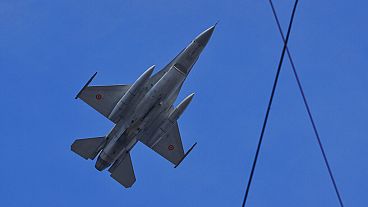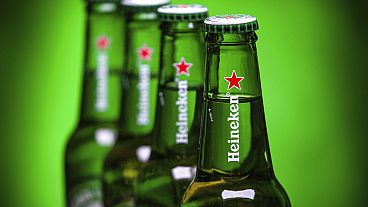Price levels vary significantly in the EU, with the highest prices being 2.4 times the lowest. Variations differ with factors such as tax and labour costs playing a role.
Is your country more expensive than other European countries? Which goods and services are cheaper than the EU average in your country? Price level indices (PLIs) are designed to make these comparisons possible. They measure and compare the prices of goods and services between different countries.
Essentially, PLIs indicate how much more expensive or cheaper goods and services are in a specific country compared with another country or group of countries, such as the EU or Europe.
The "overall" indicator is the household final consumption expenditure, which includes the direct spending of resident households. This indicator reflects the total outlay on goods and services.
According to Eurostat, the EU's official statistical office, price levels for household final consumption expenditure varied significantly across the EU in 2023. Denmark had the highest price levels at 143% of the EU average, followed by Ireland at 142% and Luxembourg at 135%. Conversely, Bulgaria and Romania had the lowest price levels, both at 60%, with Poland at 66%.
This indicates that a particular basket of identical goods and services costs €143 in Denmark, €135 in Luxembourg, €66 in Poland, and €60 in Bulgaria and Romania. It suggests that you would pay more than double in Denmark compared to Bulgaria for the same basket.
Since the EU average is set at 100, a country is relatively expensive compared with the EU if the price level index of the country is higher than 100. If the price level index is lower than 100, then the country is relatively inexpensive or cheap.
Free Trade Association (EFTA), EU candidate and potential candidate countries are included — Switzerland topped the list with a staggering 174% of the EU average, followed by Iceland at 156%, and Denmark at 143%.
The lowest price levels were found in Turkey at 42%, North Macedonia at 52%, and Bosnia and Herzegovina at 58%.
This significant contrast highlights the diverse economic landscapes within Europe, where the cost of goods and services can vary widely from one country to another.
More than three times more expensive in Ireland than in Bulgaria
In 2023, among the main groups of consumer goods and services, the widest price gap in the EU was observed in the category of alcohol and tobacco. The price level in the most expensive country was around 3.2 times higher than in the least expensive one in this category. Ireland (211% of the EU average) had the highest prices, while Bulgaria (66%) had the lowest.
“This large price variation is mainly due to differences in taxation of these products,” Eurostat explained.
The price level was comparatively lower in Balkan countries, whereas Nordic countries had higher levels. The latest available figure for the UK is from 2020, making direct comparison difficult, but it was 165%, indicating the UK's high cost of these goods.
Germany (99%) was slightly below the EU average, while alcohol and tobacco prices in France were 32% higher than the EU average.
Restaurants and hotels had the second largest price level differences, with the highest prices being nearly three times the lowest. The lowest prices were recorded in Bulgaria (52% of the EU average), followed by Romania (65%) and Hungary (72%). The highest prices were in Denmark (152%), followed by Finland (129%) and Ireland (128%).
The price variations are not primarily driven by taxes. It can be attributed to other reasons, such as varying labour costs and differences in local economic conditions.
Price level differences are less pronounced in other categories compared to alcohol and tobacco, as well as in restaurants and hotels.
Clothing had the third-largest price variation, with a 1.6 times difference between the cheapest and most expensive. The cheapest prices were in Spain (81%), Bulgaria (82%), and Hungary (88%). The most expensive clothing was in Denmark (131%), Czechia (126%), and Estonia (118%).
Turkey was an outlier in clothing at only 30% of the EU average.
Price differences were also observed in food and non-alcoholic beverages, ranging from 74% of the EU average in Romania to 119% in Luxembourg. Personal transport equipment varied from 90% in Slovakia to 129% in Denmark. Consumer electronics ranged from 92% in Italy to 113% in France.
In 2020 and 2021, the largest price variations were observed in restaurants and hotels, while alcohol and tobacco ranked second.















